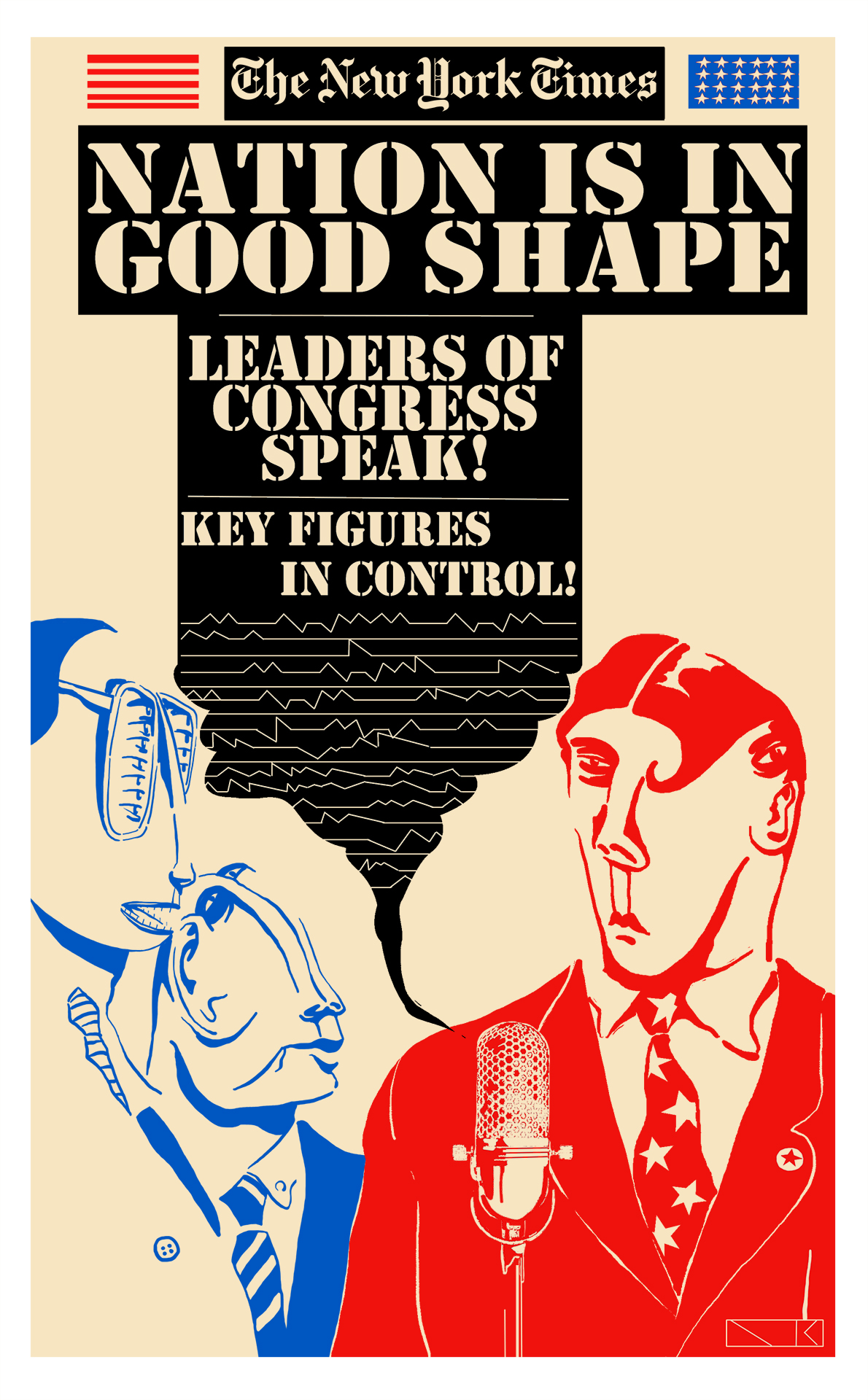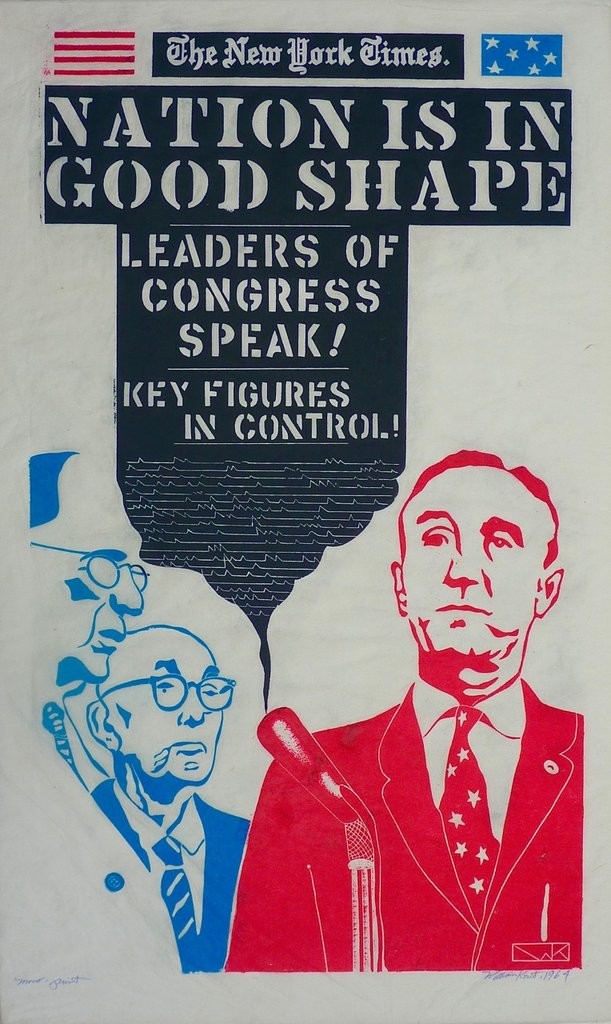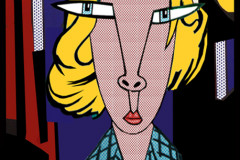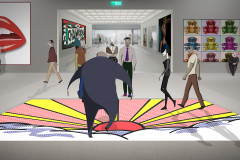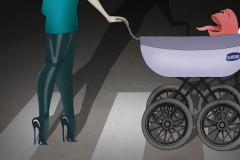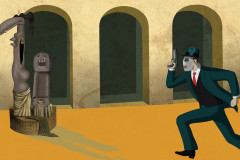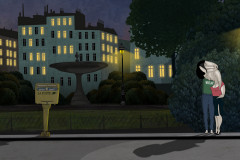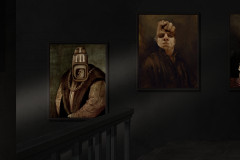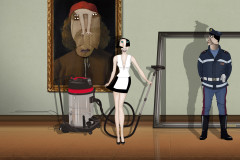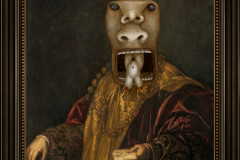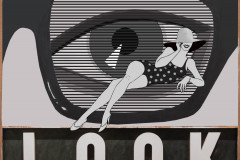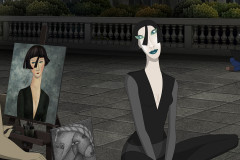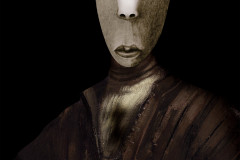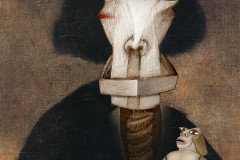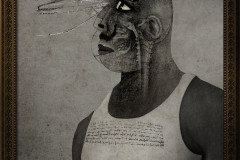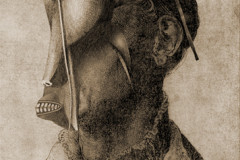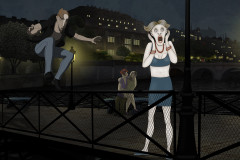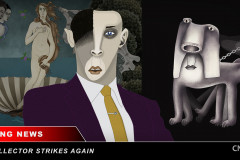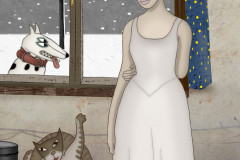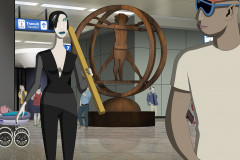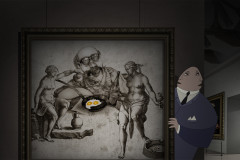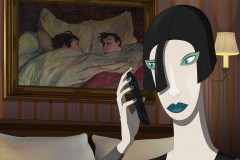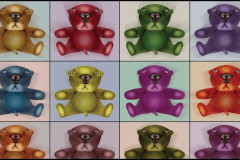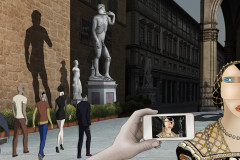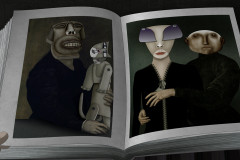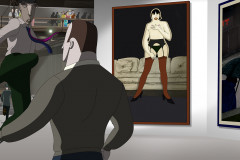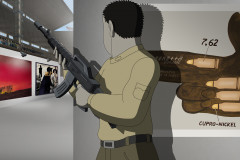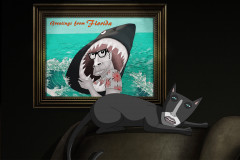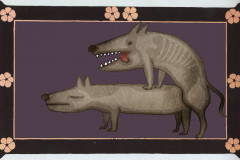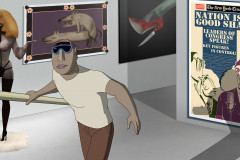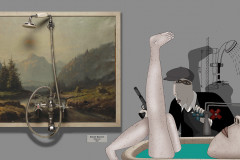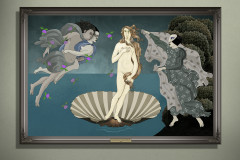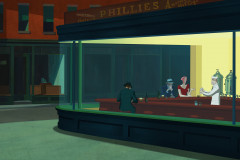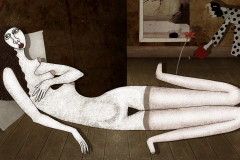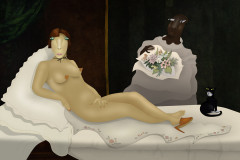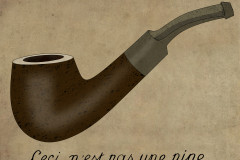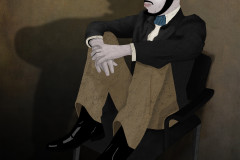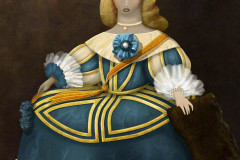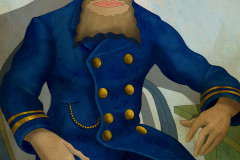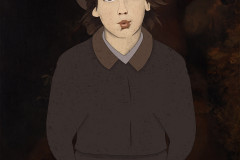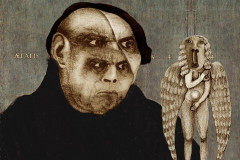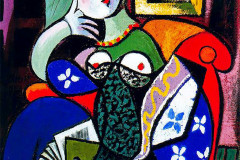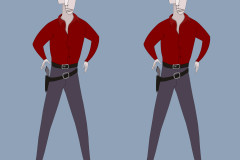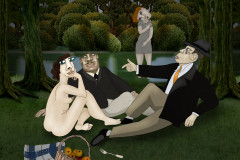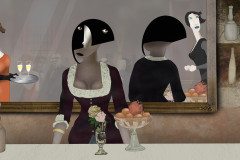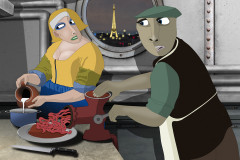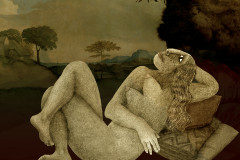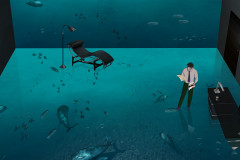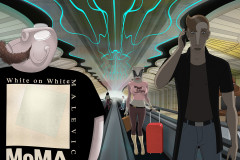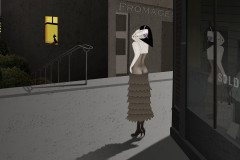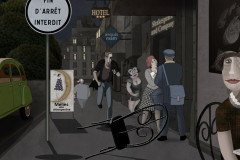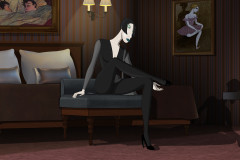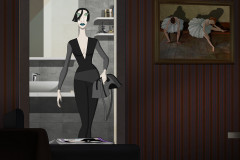Kent, William (1919-2012): Nation is in Good Shape („A nemzet jó állapotban van”), 1964 (színes monoprint rizspapíron, 71 x 43 cm). Az autodidakta amerikai képzőművész – képgrafikus és fafaragó szobrász – politikai témájú szatirikus nyomata a vietnámi háború éveiből. A Ruben Brandtban a tokiói pop-art kiállításon kirobbanó verekedés hátterében látható.
William Kent sajátos, „külön utas” alkotója az amerikai művészetnek. Eredetileg zenét tanult, és csak tanulmányai befejezése után fordult – immár önállóan – a képzőművészet felé. A '60-70-es években saját fejlesztésű képgrafikai eljárással – nagy méretű pala-alapba vésett ábrázolásokról vett színes nyomással – készített a pop-art irányzatához közel álló politikai és szexuális tartalmú, provokatív műveket, majd a fa mint anyag kezdte érdekelni és egy farmra elvonulva alkotott élete végéig hatalmas méretű, lenyűgöző technikai tudással megfaragott szobrokat. Ez a plakátja a pop-art művészek munkamódjához hasonlóan egy sajtófotó alapján készült, melyen amerikai vezető poltikusok (a Fehér Ház szóvivője, a Szenátus elnöke és egy szenátor) tartanak sajtótájékoztatót Johnson elnökkel való tárgyalásuk után. A főcímben kiemelt állítás, a csupa erőt és optimizmust sugárzó üzenetek éles kontrasztban álltak az amerikai társadalom vietnámi háború okozta szétszabdaltságával. Ironikus a politikusok szlogenjeinek illusztrálása: mintegy a nemzet szabályos pulzusát („jó állapotát”) jelképezi a feliratok alatt elhelyezett szeizmikus (azaz földrengést vizsgáló) görbe. A 93 éves korában bekövetkezett haláláig aktív Kent egyik utolsó interjújában így tekintett vissza 1977-ben lezárt grafikai munkásságára: „Ezek a műveim máig aktuálisak, hiszen az emberek akkor sem értették és ma sem értik a szatírát.” A film történetében van egy szál, amely szerint Gerhard Brandt „pszichotechnikával”, azaz manipulált politikai propagandával foglalkozott az CIA megbízásából, ennek a bizonyos kutatásnak volt a része a 25., azaz manipulatív képkocka rejtélye is. William Kent képének megjelenése a háttérben ennek a mellékszálnak vizuális megerősítése és visszacsatolása, egyúttal jó példa arra, hogy a film miként építkezik a lehetséges jelentések létrejötte tekintetében. Ez is a film egyik sajátos különlegessége, hogy a nézők erőteljesen bevonódnak a „jelentésépítésbe”.
Kent, William (1919–2012): Nation is in Good Shape, 1964 (color monoprint on rice paper, 71 x 43 cm). This politically charged satirical print from the Vietnam War era was created by the self-taught American artist—both printmaker and wood sculptor—and appears in Ruben Brandt, Collector during the brawl that breaks out at the Tokyo pop-art exhibition.
William Kent was a true outlier in the American art world. Originally trained in music, he turned to the visual arts on his own after completing his studies. In the 1960s and ’70s, he developed a unique graphic process involving large stone (slate) plates carved with images, from which he made colorful prints. His provocative, often sexually and politically themed works share formal affinities with pop art, though Kent remained staunchly independent. Later in life, he shifted his focus to wood, retreating to a farm where he carved massive, technically impressive sculptures until his death at the age of 93.
This poster is based on a press photograph showing leading American politicians—White House spokespeople, the Senate president, and a senator—addressing the media after a meeting with President Johnson. The bold headline, Nation is in Good Shape, brims with forced optimism and strength, in stark contrast with the deep societal divisions caused by the Vietnam War. Beneath the slogans, Kent ironically includes a seismic graph—a tool used to measure earthquakes—posing as the nation’s "steady pulse," cleverly undermining the official message with a visual metaphor of instability.
In a 1977 interview, Kent, looking back on his graphic work, remarked: “These pieces are still relevant today—people didn’t understand satire then, and they still don’t.” His work appears in the film not only as historical background but as a visual cue reinforcing a secondary narrative: the CIA’s covert psychological manipulation experiments, conducted by Gerhard Brandt. This includes the legendary “25th frame,” a subliminal technique embedded in propaganda films. Kent’s poster, quietly occupying the background, thus becomes a subtle but intentional nod to this subplot—and a prime example of how the film builds layers of meaning. Ruben Brandt, Collector invites viewers to participate actively in decoding its visual and symbolic language, making interpretation itself a central part of the experience.






